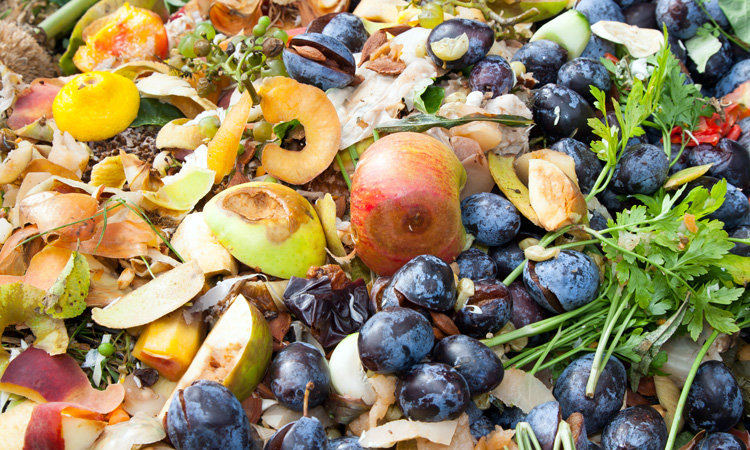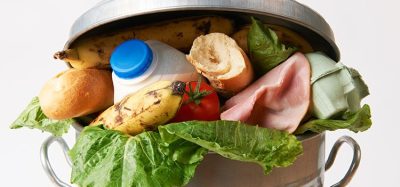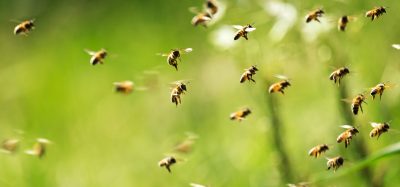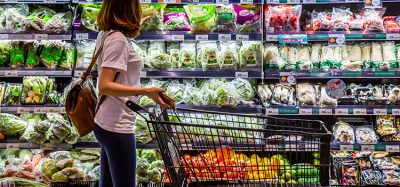How should we dispose of food waste?
- Like
- Digg
- Del
- Tumblr
- VKontakte
- Buffer
- Love This
- Odnoklassniki
- Meneame
- Blogger
- Amazon
- Yahoo Mail
- Gmail
- AOL
- Newsvine
- HackerNews
- Evernote
- MySpace
- Mail.ru
- Viadeo
- Line
- Comments
- Yummly
- SMS
- Viber
- Telegram
- Subscribe
- Skype
- Facebook Messenger
- Kakao
- LiveJournal
- Yammer
- Edgar
- Fintel
- Mix
- Instapaper
- Copy Link
Posted: 8 July 2021 | New Food Magazine | No comments yet
Researchers from the US Department of Energy have been busy analysing alternatives to landfill when it comes to disposing of food waste, with four options identified.


The expected decline in the number of landfills across the United States coupled with bans on disposing large amounts of organic waste in landfills that have been enacted in multiple states has prompted researchers at the US Department of Energy’s (DOE’s) National Renewable Energy Laboratory (NREL) to examine other ways to grapple with the issue of food waste disposal.
The researchers determined no single solution exists in the US for dealing with food waste disposal. NREL researchers Alex Badgett and Anelia Milbrandt came to that conclusion after examining the economics involved in five different ways to handle disposing of food waste, including disposing of it into a landfill.
“If we are trying to develop an optimised waste management system in the US that diverts all food waste from landfills, there is not necessarily any one technology that will work for all areas of the country,” Badgett said. “An optimised system would likely use different technologies in different locations and at different sizes.”
Badgett and Milbrandt are coauthors of a newly published paper entitled “Food waste disposal and utilization in the United States: A spatial cost benefit analysis” which appears in Journal of Cleaner Production.
According to the research team, 75 percent of food waste winds up in landfills. But many landfills are running close to capacity and a significant number are scheduled to close by 2050, the researchers found. Although sufficient land is available for new landfills in rural America, residents in more-populated regions will be forced to transport waste long distances for disposal.
Secondly, organic waste disposal bans enacted in several states require disposal of food waste in facilities other than landfills. Given a need for investment in new waste management facilities, an opportunity exists for innovative and improved pathways for waste streams. Badgett and Milbrandt examined five options for what to do with food waste, including the continued dumping into landfills.
The other four options are:
- Anaerobic digestion, in which microorganisms break down biodegradable material in the absence of oxygen
- Composting, a biological process involving decomposition of organic matter in a controlled environment to produce compost
- Incineration, where trash is burned for heat and/or power
- Hydrothermal liquefaction, in which wet organic material is converted into biocrude.
Incineration has fallen out of favour because of increased environmental regulations and public opposition to the construction of new facilities, and hydrothermal liquefaction remains in the pilot stage.
The researchers examined the economics of operating various types of facilities, considering how much revenue each brings in from users or from the sale of products. They modelled the financial viability of the technologies, considering capital and operating costs of the facilities; revenue from the sale of power, heat, fuels, and other products; and production credits such as Renewable Identification Number (RIN) credits under the Renewable Fuel Standard for the generation and use of biogas as vehicle fuel.
All of the ways to handle food waste exhibit some economy of scale (where costs decrease when facilities are built at larger sizes), but the researchers found the rate at which financial viability changes with size of the facility is not consistent. For example, landfills and incinerators designed to treat bulk municipal solid waste, which includes food waste, must be constructed at large sizes in order to leverage economies of scale for these pathways, while digesters and composters can be built at smaller scales and still provide a profitable alternative for food waste disposal.
Related topics
Related organisations
US Department of Energy’s National Renewable Energy Laboratory (NREL)








